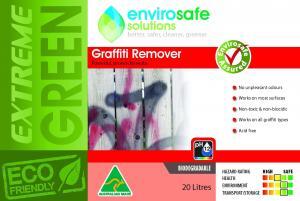 While heating and cooling concerns may not be as severe as those experienced by our European counterparts, there is no doubt the extremes of the Australian climate in some parts of the nation, means that energy expenditure must be monitored carefully. Summer in Australia can be very, very hot, and winters in the inland regions and in the southern states can be bitingly cold. This of course translates to the possibility of excessive spending and usage of energy. We warm our homes, we cool our homes. We try as best we can, to live comfortably on a continent of extremes and often rugged conditions. Today Envirosafe Solutions considers what each of us can do to minimise our heating and cooling costs. And in so doing, we reduce greenhouse gas emissions and help the planet on its way.
While heating and cooling concerns may not be as severe as those experienced by our European counterparts, there is no doubt the extremes of the Australian climate in some parts of the nation, means that energy expenditure must be monitored carefully. Summer in Australia can be very, very hot, and winters in the inland regions and in the southern states can be bitingly cold. This of course translates to the possibility of excessive spending and usage of energy. We warm our homes, we cool our homes. We try as best we can, to live comfortably on a continent of extremes and often rugged conditions. Today Envirosafe Solutions considers what each of us can do to minimise our heating and cooling costs. And in so doing, we reduce greenhouse gas emissions and help the planet on its way.
According to the Australian Government, heating and cooling of Australian homes and businesses can account for up to 40% of the total annual energy use. In some cases, it is even more.[1] But there are solutions and there are alternatives. There are various strategies and approaches you can adopt to cut down on your heating and cooling costs and here are just a few:
Passive Design
“Passive design is design that does not require any mechanical heating or cooling. Homes that are passively designed take advantage of natural climate to maintain thermal comfort.” [2] This involves such factors as:
- Shading
- Orientation of the build
- Designing with the climate in mind
- Utilising passive solar heating
If you are thinking about building a house, think about these factors at the design and planning stage. You may be surprised at how much money you can save in heating bills later on down the track once you are living in your new home.[3]
Other ways you can reduce your heating and cooling costs is to consider the modes of mechanical heating and cooling you use.
Mechanical Heating
If you cannot implement passive heating and cooling, then the next best option may indeed be to choose appropriate heating for your particular situation. This will depend on your individual circumstances. But here are few guidelines that may help you on your way:
- Gas heaters. These are cheaper to run than electric heaters and produce 1/3 greenhouse gas emissions than the electrical equivalent.
- Heat pumps or reverse-cycle air conditioners are the most energy efficient when it comes to electric heating
- Electric in-slab floor heating is the most expensive heating to run.
Mechanical Cooling
There are a number of mechanical cooling options to choose from:
- Fans. These are the cheapest option on the market and in less extreme areas of Australia may be sufficient to cool homes.
- Evaporative coolers. These are the preferred choice in areas where there is very low humidity.
- Air conditioners. These are by far the most damaging to the environment. Filters need to be cleaned regularly and conditioners that are not installed correctly or that are not maintained properly can cost you more.
Make sure to source the cheapest and most environmentally sound heating and cooling options.
For more information concerning environmentally safer solutions for our Australian environment, please contact Envirosafe Solutions. Envirosafe Solutions produces the Extreme Green Range of liquid products for business, the home and for industry. To purchase or enquire please call Envirosafe Solutions on 1300 889070.
[1] http://www.livinggreener.gov.au/energy/heating-cooling
[2] http://yourhome.gov.au/technical/fs41.html
[3] Ibid



















